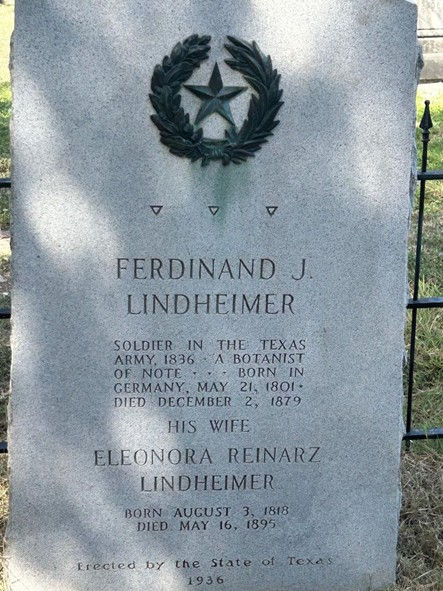The Father of Texas Botany
- PBMG

- Oct 7
- 2 min read

By Debbie Roland, Master Gardener
We recently took a trip to visit one of the kids in the Hill Country. After Emmy got me interested in Ferdinand Lindheimer, often called the “Father of Texas Botany,” I realized that his home and gardens are located in New Braunfels and that I had actually driven by it numerous times. A friend set up a tour with the New Braunfels Conservation Society. A member, who is also a Master Gardener, met us there and was full of information.
Lindheimer was born in Frankfurt, Germany, in 1802, was well educated, and taught for several years. He became involved in revolutionary causes and escaped to the U.S. in 1833. He joined a German colony in Veracruz, Mexico, where he worked on a banana plantation. He joined the Texas Revolution, arriving in San Jacinto the day after the winning battle for Texas independence in 1836.
He spent several years farming, where he began collecting unknown Texas native plants. Lindheimer was fascinated by the rugged and varied landscape of Central Texas. At the time, little was known about the region's flora, and he began taking it upon himself to collect it. Through this work, he was put in contact with Asa Gray from Harvard University (a leading biologist at that time) and George Engelmann in St. Louis. This marked the beginning of Lindheimer’s career as a Texas botanist. He transmitted thousands of specimens to Gray and Engelmann.
Many of the specimens he collected were previously unknown to science. Plant species have been named in his honor such as the Prickly Pear Cactus (Opuntia lindheimeri) and Texas yellow star ((Lindheimera texana).
In 1852, Lindheimer settled in New Braunfels, where he became the editor of the oldest German-language newspaper in Texas. He influenced his community not just as a scientist but also as a teacher and civic leader. His house, which we toured, still stands and is now the Lindheimer House Museum. It is an excellent preservation of his legacy and contributions to Texas history.
He died in 1879 and is buried in Comal Cemetery. His grave is marked with a beautiful headstone and a Texas Historical Marker (see picture below). He is remembered not only for his botanical contributions but for being one of many who embody the spirit of discovery and resilience that defines Texas. He helped lay the foundation for generations of Texas naturalists, nature lovers, and historians alike, whether it is a wildflower beside the road or a plant name in a field guide; his influence is never very far away.
If you are ever around New Braunfels a tour of his home and gardens is well worth your time. A list of plants named for Lindheimer was provided to me by our tour guide and is now available on our website, westtexasgardening.org.
If you have questions, call the AgriLife office in Odessa at 498-4071 or in Midland at 686-4700. Additional information, and our blog for access to past articles, is available at westtexasgardening.org. Click on “Resources.”

Gravestone of Ferdinand J. Lindheimer
Photo: Debbie Roland
.jpg)



Comments